Method
Whether the patient is awake or deep, the process of extubation is similar and includes the following steps:
In general, the patient’s airway is safest when the endotracheal tube is in place. After it is removed, the patient may then be at risk of airway complications, which will be discussed in the remaining part of this session.
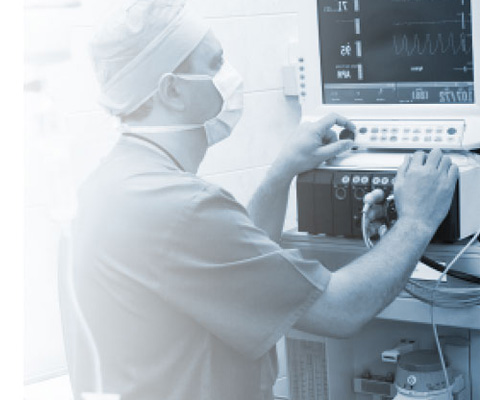
Whether the patient is awake or deep, the process of extubation is similar and includes the following steps:
Suction the patient
Suction the patient’s
oropharynx under direct vision to ensure it is clear of debris. This will
reduce the risk of aspiration and laryngospasm. If you intend to extubate
when the patient is awake, it is sometimes useful to insert a bite
block.
In general, the patient’s airway is safest when the endotracheal tube is in place. After it is removed, the patient may then be at risk of airway complications, which will be discussed in the remaining part of this session.
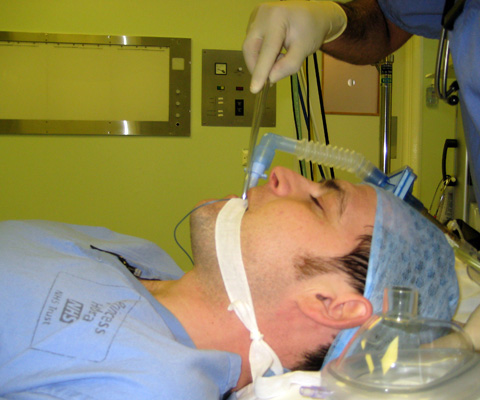
Whether the patient is awake or deep, the process of extubation is similar and includes the following steps:
Oxygen via ETT
Continue the administration of 100% oxygen to
the patient.
In general, the patient’s airway is safest when the endotracheal tube is in place. After it is removed, the patient may then be at risk of airway complications, which will be discussed in the remaining part of this session.
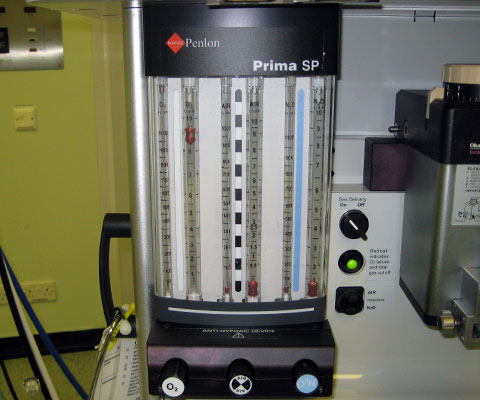
Whether the patient is awake or deep, the process of extubation is similar and includes the following steps:
Untie ETT
Untie the endotracheal tube and
deflate the cuff.
In general, the patient’s airway is safest when the endotracheal tube is in place. After it is removed, the patient may then be at risk of airway complications, which will be discussed in the remaining part of this session.
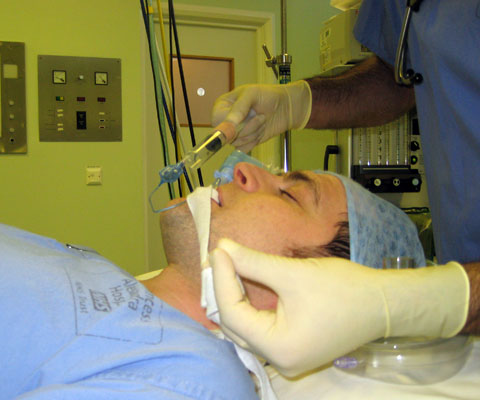
Whether the patient is awake or deep, the process of extubation is similar and includes the following steps:
Apply positive pressure
Apply a small amount
of positive pressure to the reservoir bag and remove the endotracheal
tube.
In general, the patient’s airway is safest when the endotracheal tube is in place. After it is removed, the patient may then be at risk of airway complications, which will be discussed in the remaining part of this session.
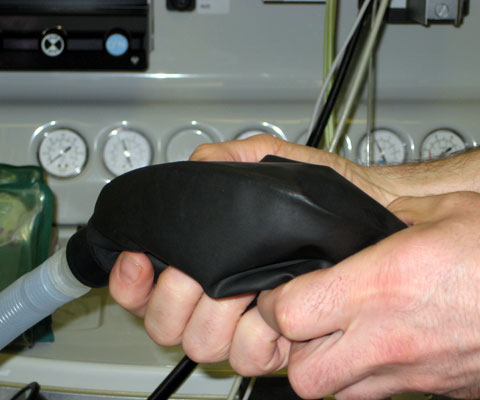
Whether the patient is awake or deep, the process of extubation is similar and includes the following steps:
Remove ETT
The patient will breathe out and
clear any remaining secretions.
In general, the patient’s airway is safest when the endotracheal tube is in place. After it is removed, the patient may then be at risk of airway complications, which will be discussed in the remaining part of this session.
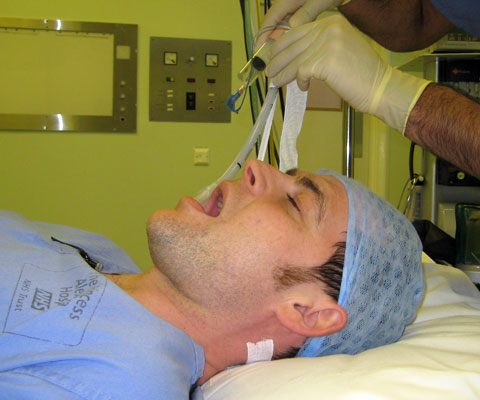
Whether the patient is awake or deep, the process of extubation is similar and includes the following steps:
Suction again
It may be necessary to perform
suction to further clear any remaining secretions from the back of the
oropharynx.
In general, the patient’s airway is safest when the endotracheal tube is in place. After it is removed, the patient may then be at risk of airway complications, which will be discussed in the remaining part of this session.
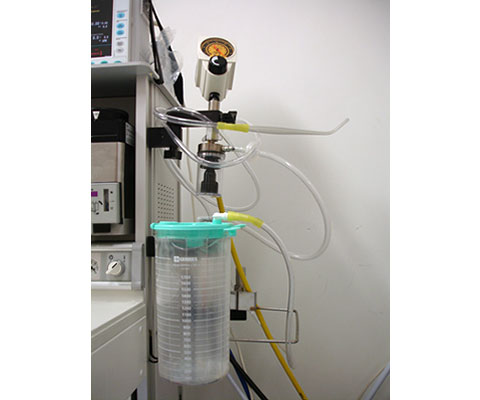
Whether the patient is awake or deep, the process of extubation is similar and includes the following steps:
Oxygen via face mask
Apply 100 % oxygen via
face mask.
In general, the patient’s airway is safest when the endotracheal tube is in place. After it is removed, the patient may then be at risk of airway complications, which will be discussed in the remaining part of this session.